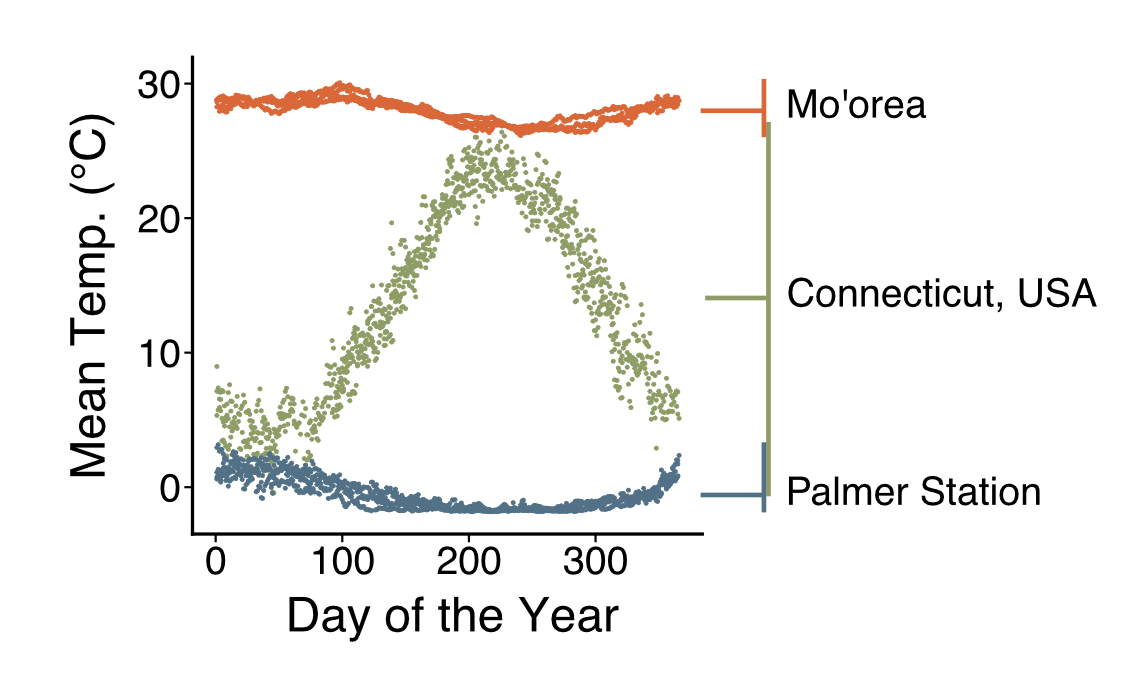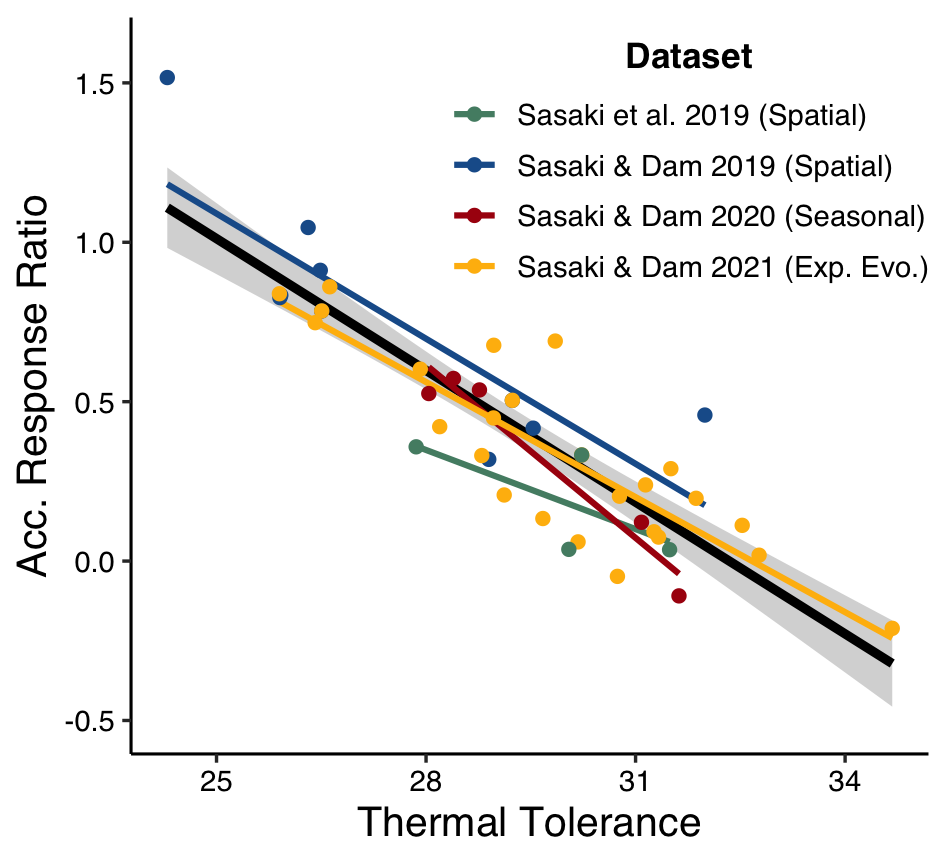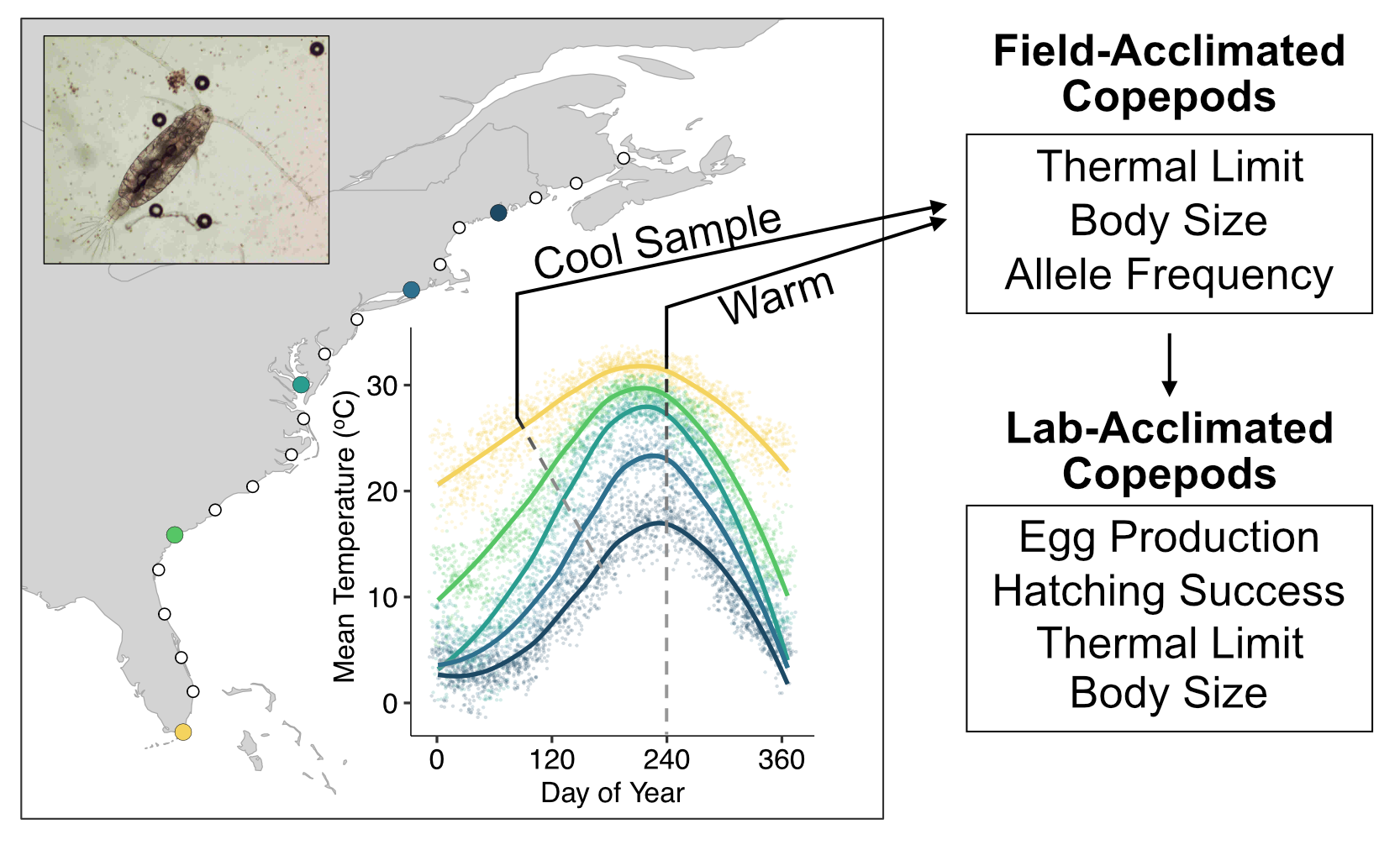Spatiotemporal patterns in thermal adaptation
Environmental variation occurs across both spatial and temporal scales. This is something we are intuitively aware of. Populations distributed across spatial environmental gradients are often adapted to their local conditions (even in taxa like copepods, that are often considered to be widely dispersed, with well-mixed populations). Populations also have to cope with temporal variation - in mid-latitude regions this seasonal variation can be extreme, fluctuating between conditions similar to polar waters in the Winter and tropical waters in the Summer!


One of the core themes in my research is describing phenotypic patterns across these different axes of variation, and disentangling the relative influences of plasticity and genetic differentiation. For example, using laboratory common garden experiments, I revealed both spatial and seasonal variation in the upper thermal limits of the widespread copepod Acartia tonsa. This work also showed that spatial and temporal patterns in the evolution of thermal limit plasticity are highly concordant in this species, suggesting that we can use approaches like a space-for-time substitution to incorporate evolutionary adaptation into predictions about the response of populations to climate change.
Some of my postdoctoral work in the Pespeni Lab at the University of Vermont built on these findings by examining the genomic bases for seasonal and latitudinal differentiation in these copepods. This work is ongoing, but by examining the similarities in allele frequency changes across seasonal and latitudinal temperature gradients, this refines our understanding of how varying amounts of temporal variation in the environment may affect relative vulnerability of populations to long term climate change.
